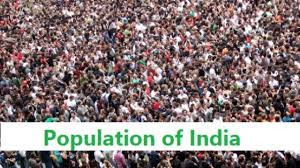Population Growth: The rate at which the population grows or declines is a significant concern. High population growth can strain resources, infrastructure, and social services, while declining populations can lead to labor shortages and economic stagnation.
Demographics: Understanding the demographic composition of a population involves analyzing factors such as age, gender, ethnicity, education level, and socioeconomic status. Demographic trends influence consumer behavior, voting patterns, workforce dynamics, and societal norms.
Population Distribution: Population distribution refers to how people are spread across a geographic area. Some regions experience urbanization, where people move from rural areas to cities in search of better opportunities, while others face depopulation as residents migrate elsewhere.
Overpopulation and Underpopulation: Overpopulation occurs when there are too many people for the available resources and infrastructure to support, leading to issues like poverty, overcrowding, and environmental degradation. Underpopulation, on the other hand, can result in declining economies, aging populations, and social challenges.
Population Policies: Governments often implement population policies to manage population growth or decline. These policies may include incentives for family planning, immigration quotas, or programs to encourage population growth through measures such as tax benefits for families with children.
Impacts on the Environment: Population growth can exert pressure on natural resources, leading to deforestation, water scarcity, pollution, and habitat destruction. Sustainable development aims to balance human needs with environmental conservation to ensure the well-being of both present and future generations.
Healthcare and Social Services: A growing population requires adequate healthcare and social services to meet the needs of its citizens. Access to healthcare, education, housing, and sanitation are essential factors in promoting public health and improving quality of life.
Global Population Trends: While population growth rates have slowed in many parts of the world due to factors such as improved access to education and family planning, certain regions continue to experience rapid population growth. Understanding global population trends is crucial for addressing challenges such as poverty, inequality, and climate change on a global scale.
Overall, population dynamics play a fundamental role in shaping societies and economies worldwide. By studying population trends and implementing effective policies, governments and organizations can work towards ensuring sustainable development and improving the well-being of people around the globe.





